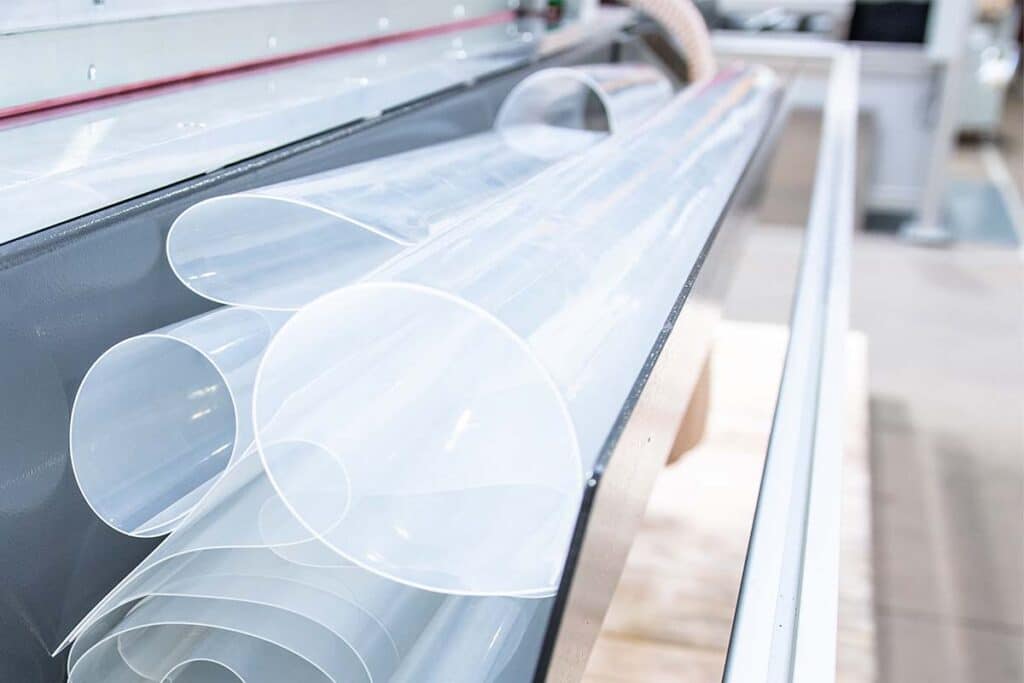Tube welders make it possible to join materials, mainly those made of heat-sealable plastics, under the influence of heat or an electromagnetic pulse. This technology enables quick and technically uncomplicated processing of the material into the desired state, whether it’s empty or filled with a dense mass.
The features of the tube welding machine employ, in the case of heat-sealable materials, hot air welding technology. All control activities of welding parameters and operation of the device are carried out fully electronically. It also applies to the placement of the tube, which is facilitated by a laser pointer. Tube welders can process a wide range of plastic and laminate materials, allowing for an extensive variety of work applications. Despite their stationary nature, modern welding machines are increasingly designed for mobility and overall compactness. Due to their relatively small dimensions and lightweight design, they have become an important tool for facilities that require fast and precise tube welding carried out by machine, with the option to easily shift production series.
Types of tube welding machines
Tube welders can be divided mainly according to their purpose. They are suitable for, among other things, welding materials containing products of dense or liquid consistency. As a result, they can be used in the following industries:
- food,
- chemical
- cosmetic,
- pharmaceutical.
The machines can be divided into two types: automatic and semi-automatic. Automatic tube welder are used when high productivity and above-average work rates are required, such as series production of materials. On the other hand, semi-automatic tube welders are simpler, much smaller, and are used for less advanced projects. Tube welders, regardless of the type chosen (automatic or semi-automatic), guarantee not only durable welding of the end pieces, but also the ability to apply a date formula, such as stamping a specific date and batch number directly onto the welded material.
Where are tube welders used?
The primary use of welding machines is within industrial production – pharmaceutical, manufacturing, food or laboratory. Creating durable welds when the tube is filled with any mass or liquid enables a wide range of applications in diverse industrial sectors.
This is facilitated by the speed of production and finishing of the tube, as well as the possibility of marking it in the mass manufacturing process.
As a result, tube welders are indispensable packaging machines in any company specializing in the production of ointments, pastes, and other products distributed in tubes. This method of product preparation – as a heat-welded tube of varying size–applies, therefore, to cosmetics – toothpaste or cream- as well as pharmaceuticals or food production. The advertising industry is also becoming an increasingly significant sector that utilizes the capabilities of tube welding machines.
How do tube welding machines work?
Zemat’s high-frequency welding machines designed to make tubing from a pre-cut sheet of PVC film show the full potential of tube welding. The machines join thermoplastic materials by pressing an electrode onto a metal die which gives the final shape to the processed tube.
It is worth highlighting the clear trends observed in the tube welding machines sector. There is a growing emphasis on safety – including sensitive security systems to control the production process to prevent, for example, a series of damage within a particular batch. Additionally, tube welders are massively utilizing the capabilities of the Internet- network-based diagnostics, upgrades, or remote communication. This makes the professional use of the devices easier, and more intuitive. It also reduces the use of human resources, as compared to the levels known from the past.
As welding machines are equipped with solutions that enable the automatic shaping of the foil, the production process becomes more efficient. Automation significantly reduces the number of people involved in machine operation.
High-frequency welding machines designed for tube applications use computerized PLC welding process control technology. Their advantage also lies in control and safety systems – the devices thus reduce the risk of potential material puncture. As a result, tube welders combine high efficiency, compact dimensions, speed of tooling resizing, and automatic film shaping on the cylinder.


